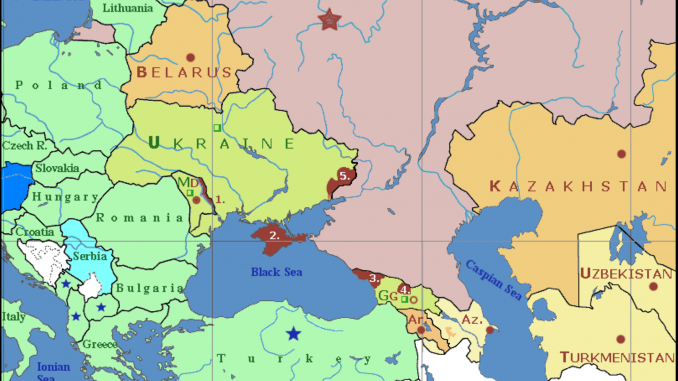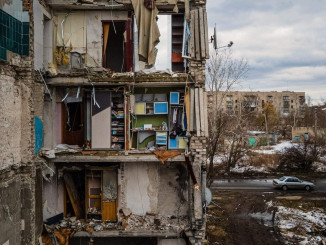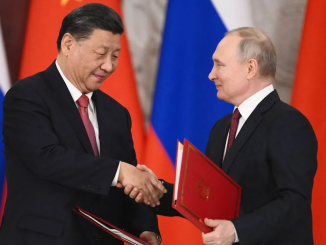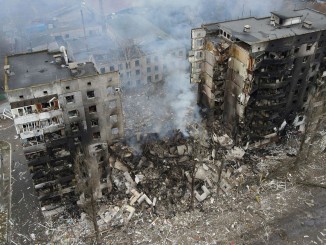
Looking at the tension between Russia and Ukraine, it seems very easy to identify Putin as the “bad dictator,” and the United States as the “honest broker,” trying to de-escalate a potential war. After all, Russia went to war against Ukraine in 2014 to annex the Crimea region, and fighting there has continued since. But a more accurate picture comes into view, as usual, when we zoom out and look at the global situation. We then see that Putin’s hawkish behavior is that of a bully being cornered by a much bigger bully.
With the exception of a few years following the Russian Revolution of 1917, the policy of Russian rulers going back centuries has been a strong “Russia first” nationalism. This means that the many other countries in the vast Soviet Union, including Ukraine, were economically subordinate to Russia. Now the Soviet Union is gone, but the same Russian nationalism survives. This has in turn fed nationalist sentiments in Ukraine.
The United States stands at the head of the North Atlantic Treaty Organization (NATO), a coalition of capitalist powers that was formed after World War II to threaten the Soviet Union. NATO has expanded since 1997 to include fourteen more Eastern-European (including former-Soviet) countries. And the Ukrainian rulers want to be next to join NATO. The Ukrainian government has long been making gestures to the U.S. and the big capitalist powers of Western Europe to allow Ukraine to join NATO and the European Union (EU).
Putin understandably sees this encroachment of NATO as a threat to his nationalistic interests in Ukraine, which really represent the interests of the richest Russian capitalists. If the big financial and industrial powers of NATO such as the U.S., England and France increase their influence in Ukraine, their capitalists will gain at the expense of Russia’s capitalists. A current bone of contention is Ukraine’s gas pipelines, through which Russia pumps its natural gas to Germany and other European countries. Until Russia makes its Nord Stream 2 pipeline (which avoids Ukraine) operational, the Russian capitalists will have all the more interest to maintain control over Ukraine, and not hand it over to the NATO countries. And it’s not only gas. There are plenty of other foreign investments in Ukraine to profit from.
Ukraine is the contested hotspot of the day, and the Ukrainian people will suffer a great deal if this conflict is allowed to escalate to a full-blown war. The capitalist system is an inherently unstable system based on fierce grow-or-die competition, pitting various national gangs of capitalists against each other. Tomorrow the hotspot may be Taiwan, in a conflict between the U.S. and China. Occasionally, or even frequently, we will have to see terrifying military conflicts flare up in different countries. The only way out of this absurd and suicidal situation is to get rid of the global capitalist system that keeps creating it.




